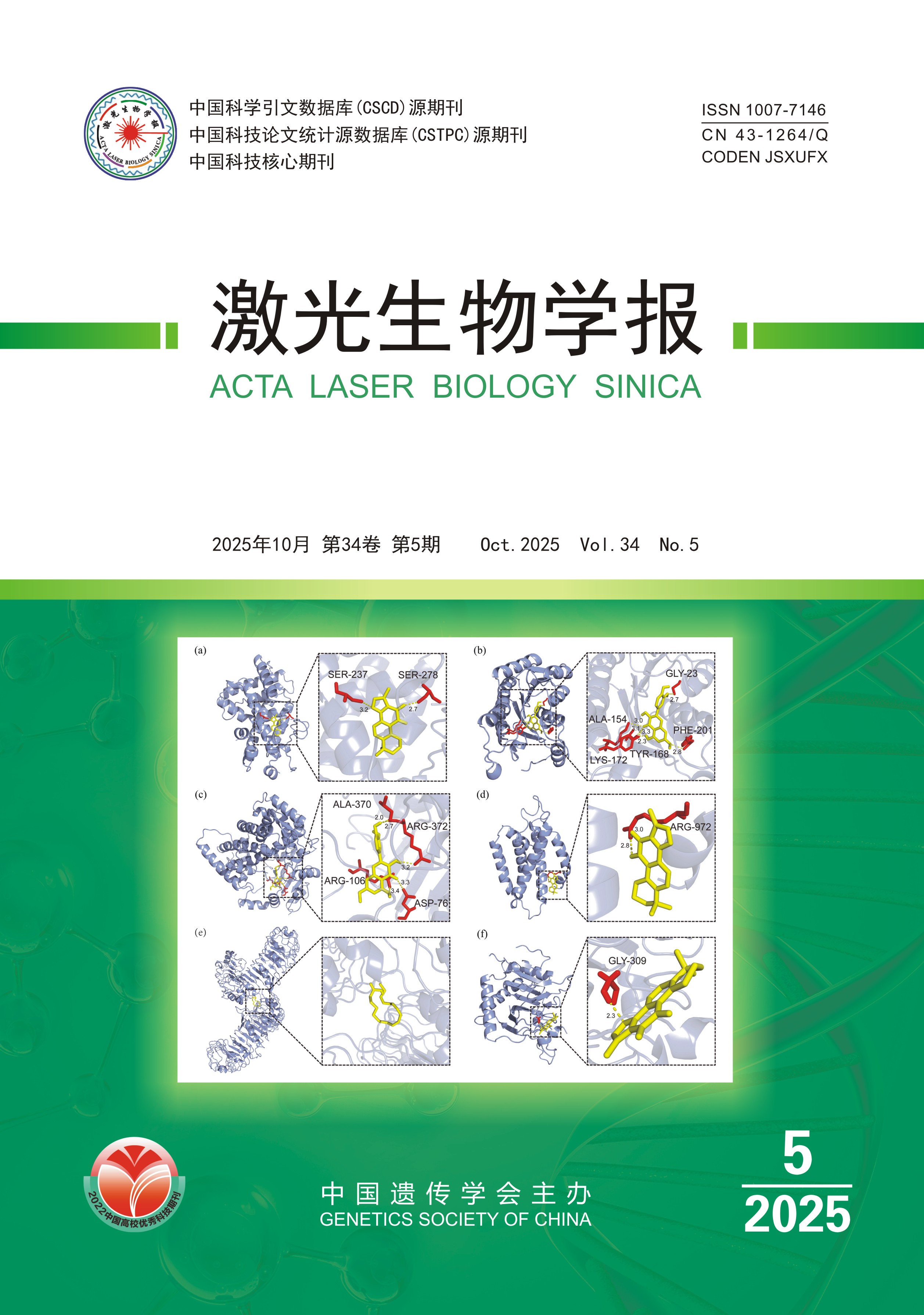ZHOU Tianyi, JIANG Zhiming, CHEN Bodi, JIANG Xuanxin, HAN Li, HE Qizhi
2025, 34(5): 442-450.
Abstract: To investigate the therapeutic effect and mechanism of arctigenin (ATG) on gentamicin (GM) induced acute kidney injury (AKI) in rats via activating the nuclear factor erythroid 2-related factor 2(Nrf2) / heme oxygenase-1(HO-1) signaling pathway and inhibiting the NF-κB signaling pathway, 36 male SD rats were selected and randomly divided into a control group (6 rats) and a model establishment group (30 rats). The model group received intraperitoneal injection of 100 mg/kg GM for 7 consecutive days to establish the AKI model. The successfully modeled rats were then randomly assigned to the model group, positive control group (5 mg/kg benazepril hydrochloride), and ATG low-, medium-, and high-dose groups (1, 3, 9 mg/kg ATG), with 6 rats in each group. The following parameters were measured: serum urea nitrogen (BUN) and creatinine (SCR) levels; renal tissue levels of superoxide dismutase (SOD), reduced glutathione (GSH), catalase (CAT), malondialdehyde (MDA), interleukin-1β (IL-1β), interleukin-6 (IL-6), tumor necrosis factor-α (TNF-α), and kidney injury molecule-1(KIM-1), as well as the mRNA and protein expression levels of Nrf2, HO-1, and nuclear factor-kappa B p65 (NF-κB p65). Compared with the model group, ATG treatment significantly reduced serum levels of BUN and SCR in rats (P<0.01). In renal tissues, it markedly upregulated the mRNA and protein expression of antioxidant indicators (SOD, CAT, GSH) and key factors of the Nrf2/HO-1 pathway (Nrf2, HO-1) (P<0.05 or P<0.01), while downregulating the expression of oxidative damage product (MDA), inflammatory factors (IL-1β, IL-6, TNF-α), kidney injury marker (KIM-1), as well as NF-κB p65 mRNA and protein (P<0.05 or P<0.01). Histopathological examination revealed that ATG treatment improved renal tubular epithelial cell morphology, attenuated tubular atrophy, fibrosis, and inflammatory infiltration. These results demonstrate that ATG exerts a multi-target therapeutic effect on GM-induced AKI by synergistically activating the Nrf2/HO-1 pathway to enhance antioxidant capacity and inhibiting the NF-κB pathway to alleviate inflammatory response, thereby providing a theoretical basis for its clinical translation.
Key words: actigenin; gentamicin; acute kidney injury; nuclear factor erythroid 2-related factor 2/heme oxygenase-1 signaling pathway; nuclear factor-kappa B signaling pathway
(Acta Laser Biology Sinica, 2025, 34(5): 442-450)
